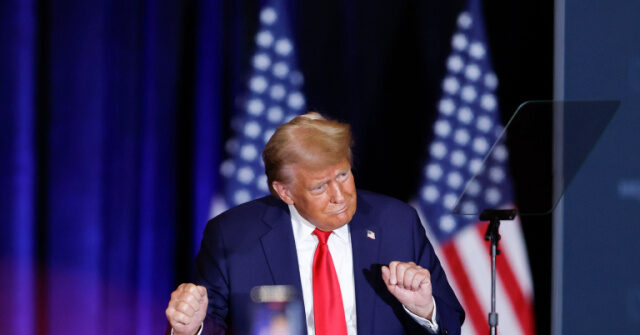Former President Donald Trump’s campaign has recently made waves by launching a Snapchat advertisement aimed at attracting younger voters, a strategic move despite the fact that Trump himself remains banned from the platform. This decision signals a significant shift in the campaign’s approach to engaging with a demographic that is crucial in the upcoming elections. Historically, Trump’s account was banned following the tumultuous events of January 6, 2021, and the persistent dispute with Snap, the parent company of Snapchat, has perpetuated his absence from one of the most popular social media platforms among youth. Unlike other platforms that have either lifted or adjusted their bans, Snap has maintained its prohibition against Trump’s personal account.
This new advertising effort by Trump’s campaign is part of a broader strategy that aims to effectively penetrate battleground states where young voters could play a pivotal role. The 15-second ad, which features bold white text reading “Who needs to vote? You,” showcases Trump smiling and gesturing towards the camera, reinforcing his image as an approachable candidate. The significance of this move lies not just in its immediate content but in the recognition of Snapchat’s potential influence over young voters, who have previously been somewhat detached from Trump’s political messaging.
As Trump’s campaign steps into the realm of Snapchat advertising, it finds itself at a disadvantage compared to his primary opponent, President Kamala Harris. Reports indicate that Harris’s campaign has invested well over $6 million in advertising on Snapchat, significantly overshadowing Trump’s financial commitment. This disparity highlights the urgency for Trump to not only establish a presence on Snapchat but also to creatively forge connections with the younger electorate. The financial imbalance in their advertising efforts underscores the challenges the Trump campaign faces as it attempts to cultivate a youthful voter base.
To complement the initial ad, the Trump campaign has rolled out two additional ads on Snapchat. One ad features Trump dancing at a rally, promoting the message of voting early, while the other showcases clips of President Harris laughing, paired with a warning about the potential consequences of inaction at polling stations, suggesting that failure to vote could enable “liberals” to enact their agendas. These ads are designed to evoke emotions and mobilize viewers, reflecting a deliberate tactic to confront and criticize the opposing campaign while galvanizing Trump’s supporters.
Overall, this shift marks a pivotal point for Trump’s strategy as he continues to seek avenues to broaden his appeal among younger voters, who are increasingly influential in shaping electoral outcomes. The decision to engage with Snapchat, despite the prior ban, reveals a recognition of the platform’s importance in contemporary political campaigning. As the election cycle progresses, the effectiveness of these ads in capturing the attention and enthusiasm of younger voters will be critical to the Trump campaign’s overall success.
In summary, Donald Trump’s campaign has taken a significant step by launching Snapchat advertisements targeted at younger voters, despite the obstacles posed by his personal account ban. With a focus on battleground states and a content strategy aimed at engaging youth, the campaign is attempting to compete with the more substantial investments made by Harris’s campaign in digital advertising. As Trump’s campaign navigates this competitive landscape, it remains to be seen how effectively it can leverage Snapchat to resonate with the younger electorate while managing its ongoing challenges with social media platforms. The narrative that unfolds in the coming months will be crucial, not only for the Trump campaign but also for the broader electoral race as a whole.

